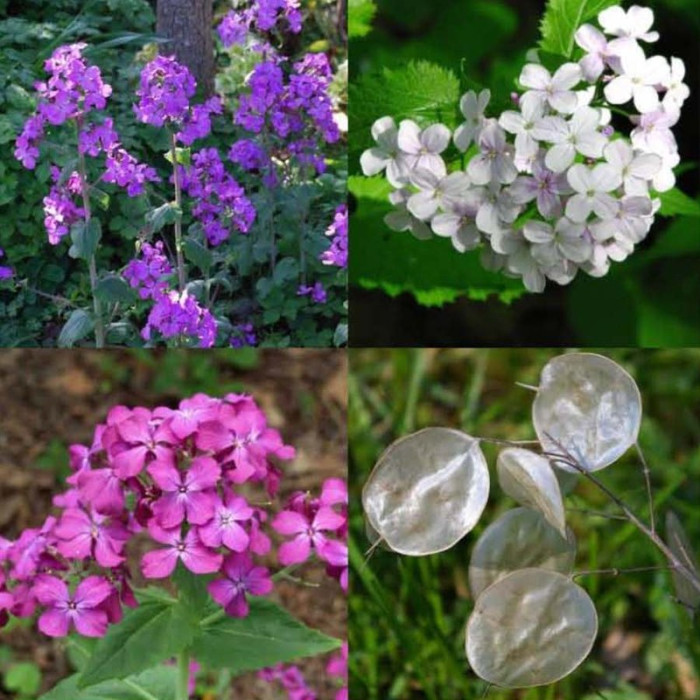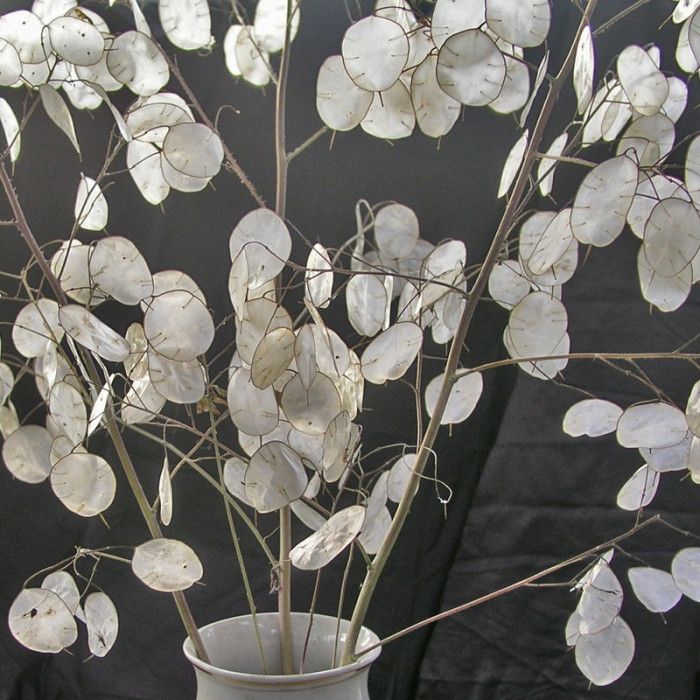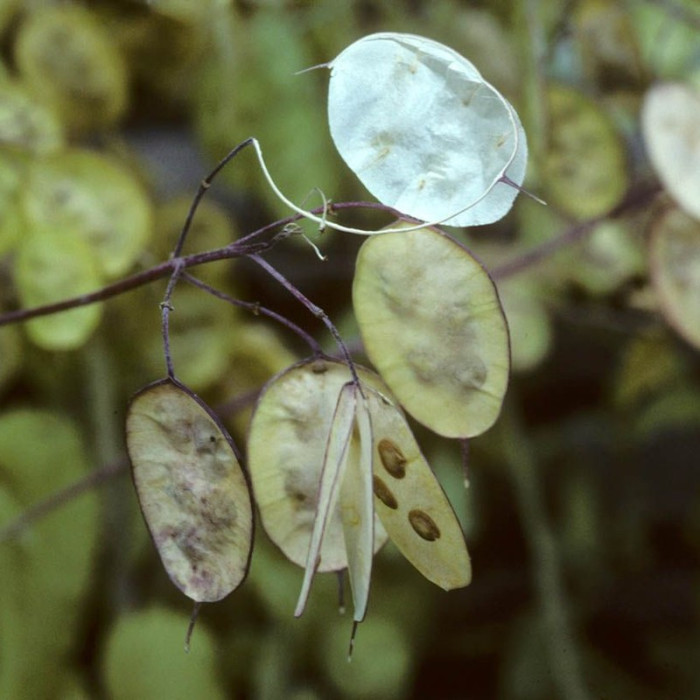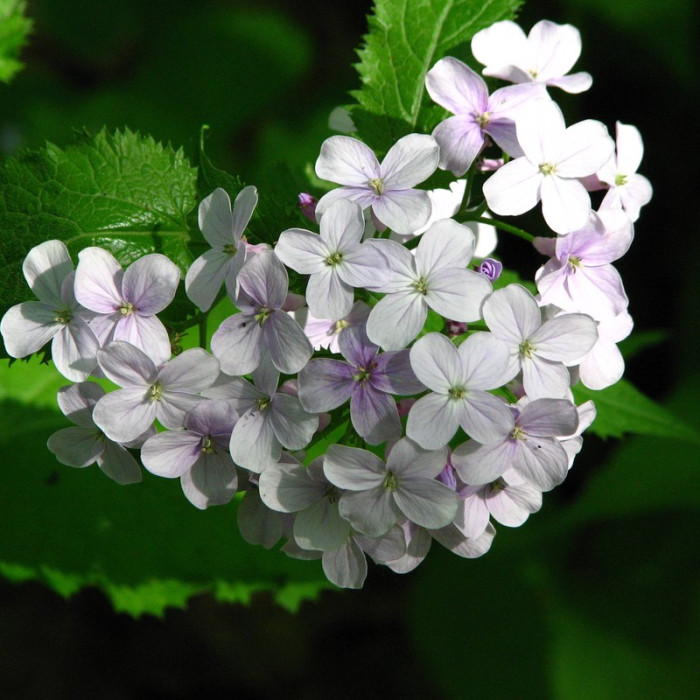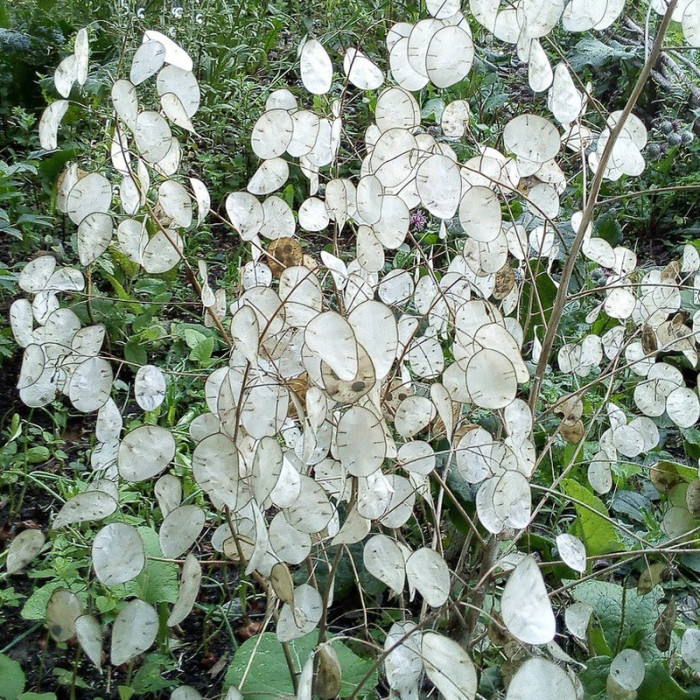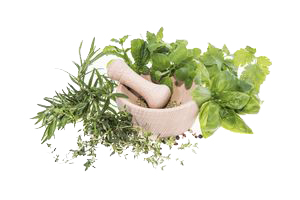Lunaria - this is the cruciferous family. The shape and color of the fruit of this plant resembles the moon. Flowers purple-lilac or white. Plant height from 30 to 100 cm. Very valuable dried flower. The plant is unpretentious, grows on any soil in sunny areas. When sown in March, it is cultivated as an annual, and in July - as a biennial.
Since the plant has not only pretty pod fruits, but also fragrant bright flowers, it is recommended to plant moon grass in group plantings, decorating flower beds and flower beds. At the same time, the placement of landing sites is possible both in the sun and in the shade. The best neighbors can be clematis, lilies and roses.
To date, landscape designers have proposed designing gravel gardens with the help of plantings of the lunnik, in which this unpretentious representative of the flora will coexist with asters, fennel and geraniums. With such a planting, since the entire space between the plants is filled with gravel, the possibility of weed growth is excluded, which are not only the cause of drowning young seedlings, but also carriers of certain diseases.
A good solution would be the formation of a Moorish lawn from annual and perennial meadow plants, which, moreover, does not need to be mowed. In this case, cornflowers, forget-me-nots and iberis should be planted next to the moon grass, calendula and poppies will look good nearby. But it is typical for the Mauritanian lawn that approximately 70% of it is allocated for cereal representatives of the flora - bent grass and fescue.

No questions about this product, be the first and ask your question.


